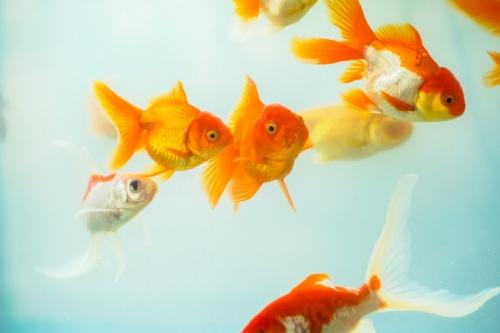Oranda Goldfish - Care, Tank Size and Tank Mate
Oranda Goldfish are beautiful freshwater fish that add a special touch to any aquarium. It's difficult to miss them because of their unique heads and colours!
They are a very popular goldfish among aquarists as a result of this. While we believe it is well-deserved, it has also resulted in some misunderstandings about their medical needs.
But don't worry; with this guide, everything will be simple. It includes all of the information you need to know about Oranda Goldfish care, as well as some useful facts and recommendations!
Read Also!
https://www.chuchugoldfish.com/
https://www.chuchugoldfish.com/medications-for-goldfish
https://www.chuchugoldfish.com/about
Oranda Goldfish Description
The Oranda Goldfish is a variation of the Common Goldfish that has been specially produced (Carassius auratus). Their hood, which resembles a lion's mane, is their most famous feature. Because of this, commonly called Lionhead or Lion mask.
These fish are becoming very popular in both ponds and aquariums. Oranda Goldfish provide a serene beauty to any aquarium with their flowing fins and striking crowns.
Oranda Goldfish Size
The Oranda can grow to 20 to 31 cm (8 to 12 inches). The wen can sometimes grow so large that it covers the goldfish's eyes. As a result, one's vision may decline or possibly go blind. Because the wen is sensitive to bacterial infections, thus need to pay additional attention.
Oranda Goldfish Average Lifespan
Oranda Goldfish can live up to 15 years if given suitable care and living conditions. It's very uncommon for these fish to live to be 20 years old if they're nurtured in a large pond.
The quality of care they receive significantly impacts their life expectancy. These fish will succumb to sickness and die if kept in crowded quarters with poor water conditions. You must provide them with excellent care to help them live as long as possible.
The appearance of Oranda goldfish
Orandas have huge, spherical matte or shiny scales and the distinctive egg-shaped bodies of most luxury goldfish.
The fin is balanced when the fish is stationary, while the tails are long and divided, which shows out of the water. The fish's common Chinese name is "flower of the water" because of its appearance.
The oranda goldfish has a big head covered in a distinctive fleshy growth known as a wen. When the Oranda is three to four months old, the wen begins to expand and continues to develop until the Oranda is two to three years old.
Oranda Goldfish come in various colours, the most prevalent of which are sparkling orange or yellow. However, there are a few unique variations available.
Black Oranda Goldfish
The name of this fish tells everything. They have all of the breed's characteristics, but their black colouration distinguishes them as a distinct type. Their heads are usually covered by fleshy hat that are a few shades lighter than the rest of their body.
Blue Oranda Goldfish
Oranda goldfish, often known as blue oranda goldfish, is a brightly coloured fish. They range in colour from a mild bluish-grey to a deep, rich blue. Can also find different colours in some specimens. It's common to see white, black, or orange spots mixed with blue.
Redcap Oranda Goldfish
The most well-known oranda variation is Red Cap. Like other varieties, their head isn't completely covered in outgrowths or "capped," like different varieties. Rather, only the top and tops of the head are covered.
Food of Oranda Goldfish
Orandas are omnivore fish that eat both plants and meaty proteins. Boiling vegetables, bloodworms, and brine shrimp are among their favourite foods. Feed the fish twice or three times a day, but only as much as they can consume in two or three minutes.
However, be cautious about what you feed your Oranda. Too much-dried food might create stomach issues, so make sure to give the friendly fish a tiny quantity of meaty protein each day — either live or frozen.
If you want to give your goldfish oranda live foods, make sure to remove the food from the water it came in before offering it to them. You might also consider
Important Note: Food is only required once a day for Adults Oranda Goldfish. Overfeeding can lead to weight gain in these fish, so be careful!
Aquarium Size for Oranda Goldfish
Because Oranda can grow 8 to 12 inches long, a minimum tank size of 20 to 30 gallons is recommended. Large tanks will dilute the waste products produced by fancy goldfish, lowering the amount and frequency of maintenance necessary.
Because these fish are quite gregarious, maintaining at least two of them is best. Allow an additional 10 litres of water for each new goldfish.
Because goldfish are oxygen-hungry, rectangular tanks are optimal, as they provide more surface area for greater gas exchange. The surface area of a tall or bowl-shaped aquarium is quite limited, resulting in unfulfilled oxygen requirements in the water.
Suitable Tank Mate for Oranda Goldfish
Oranda swims around the tank. The fish moves slowly and appears unconcerned. It is possible to keep it in a calm and non-aggressive environment. This thumbstall goldfish makes a fantastic tankmate.
Goldfish produce a lot of waste, so keeping them in the same tank as other fish isn't a smart idea. Since it is a weak swimmer, Oranda should not be held with energetic swimmers such as common goldfish or shubunkin.
In Conclusion
Oranda Goldfish care isn't difficult if you grasp the basic requirements of these fish. All you have to do to assist these fish in thriving is follow the instructions in this tutorial.
We hope you found these tips useful and are now better equipped to keep these fish in your home aquarium. We believe that owning an Oranda Goldfish is a wonderful experience and that you should give it a try!










Comments